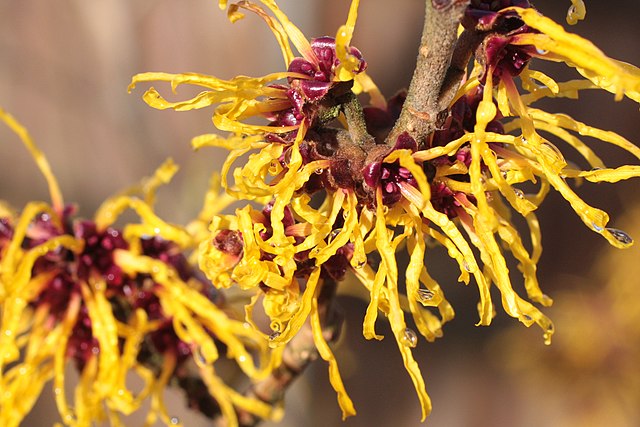1
/
of
3
Iron Baraga Conservation District
Witchhazel Pack of 25
Witchhazel Pack of 25
Regular price
$60.00 USD
Regular price
Sale price
$60.00 USD
Unit price
/
per
Shipping calculated at checkout.
Couldn't load pickup availability
- Climate and Hardiness: - Witch hazel is hardy in USDA zones 3-9, depending on the species. - It prefers a temperate climate with cold winters and moderate summers.
- Soil Requirements: - Witch hazel thrives in well-drained, loamy soil. - It prefers slightly acidic to neutral pH levels (around 5.5 to 7.0). - Ensure the soil is rich in organic matter to support healthy growth.
- Sunlight: - Witch hazel grows best in full sun to partial shade. - In hotter climates, providing some afternoon shade can help prevent leaf scorch.
- Watering: - Keep the soil consistently moist, especially during the plant's first few years. - Once established, witch hazel is relatively drought-tolerant but still benefits from regular watering during dry periods.
- Planting: - Plant witch hazel in the spring or fall to give it time to establish roots before extreme temperatures. - Dig a hole twice as wide and as deep as the root ball, and mix in compost to enrich the soil. - Place the plant in the hole, backfill with soil, and water thoroughly.
- Pruning: - Prune witch hazel after flowering to maintain its shape and remove any dead or damaged branches. - Light pruning can help improve air circulation and sunlight penetration.
- Fertilization: - Apply a balanced, slow-release fertilizer in early spring to support new growth. - Avoid over-fertilizing, as this can lead to excessive foliage growth at the expense of flowers.
- Pests and Diseases: - Witch hazel is relatively pest-resistant but can occasionally be affected by aphids, scale insects, or spider mites. - Common diseases include powdery mildew and leaf spot, which can be managed with proper spacing, pruning, and fungicide treatments if necessary.
- Propagation: - Witch hazel can be propagated by seed, cuttings, or grafting. - Seeds require a period of cold stratification to germinate. - Softwood cuttings taken in early summer can be rooted with the help of rooting hormone.
- Medicinal Uses: Witch hazel has traditionally been used to treat minor skin injuries, insect bites, and swelling. Due to its anti-inflammatory and soothing properties, it is also used in some over-the-counter hemorrhoid treatments.
- Active Compounds: The plant contains tannins, flavonoids, and volatile oils, contributing to its astringent and anti-inflammatory effects.
- Safety and Side Effects: Witch hazel is generally considered safe for topical use, but it can cause skin irritation in some individuals, especially those with sensitive skin. It is essential to perform a patch test before widespread use.





